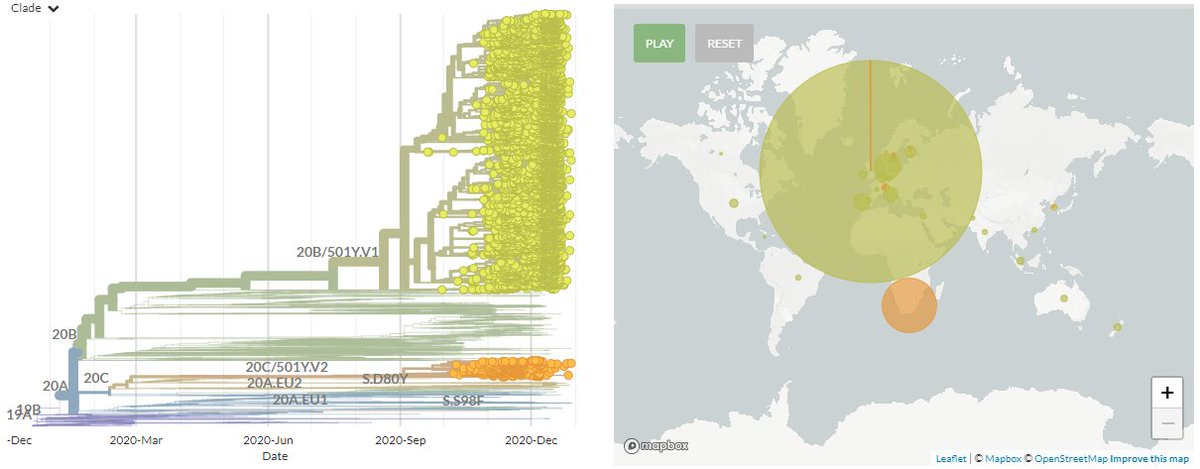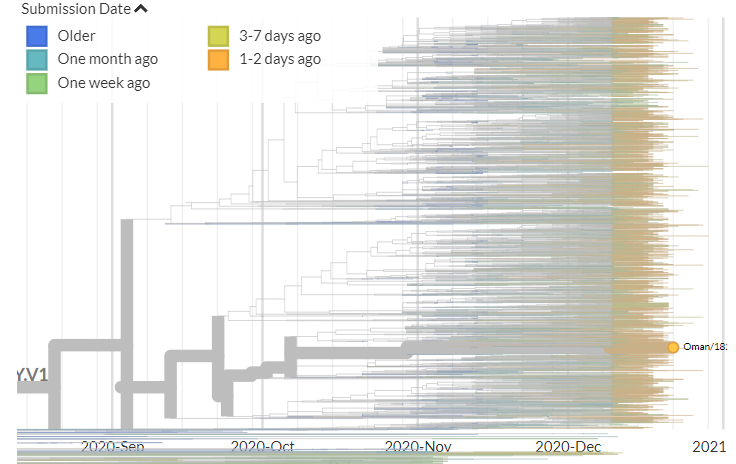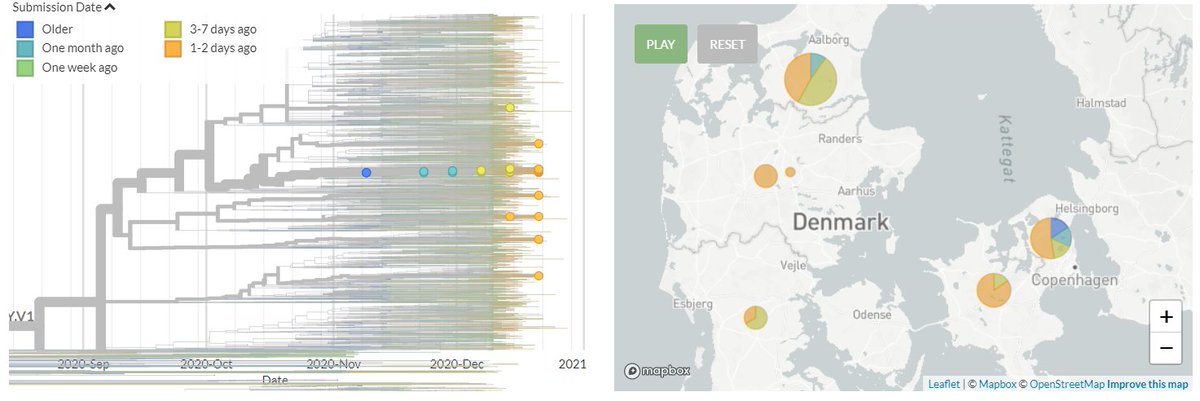
To add to the excitement of your Saturday evening, the focal S:N501 build is now updated with data from 8th Jan, including 48 new seqs in 501Y.V1 (B.1.1.7 #b117) & 501Y.V2.
1/12
nextstrain.org/groups/neherla…
1/12
nextstrain.org/groups/neherla…

There are 46 new non-UK sequences in 501Y.V1, from the Netherlands, Italy, Israel, Ireland, Norway, Sweden, the USA, and Luxembourg.
And 2 new non-South African sequences in 501Y.V2, from Australia for the first time.
2/12

And 2 new non-South African sequences in 501Y.V2, from Australia for the first time.
2/12


In 501Y.V1:
Ireland has 4 new sequences (orange). 2 sit separately but are identical, indicating an additional introduction. 2 link to a previous sequence (green), 1 mutation away each. This could indicate location transmission, unsampled diversity, or a common exposure.
3/12


Ireland has 4 new sequences (orange). 2 sit separately but are identical, indicating an additional introduction. 2 link to a previous sequence (green), 1 mutation away each. This could indicate location transmission, unsampled diversity, or a common exposure.
3/12

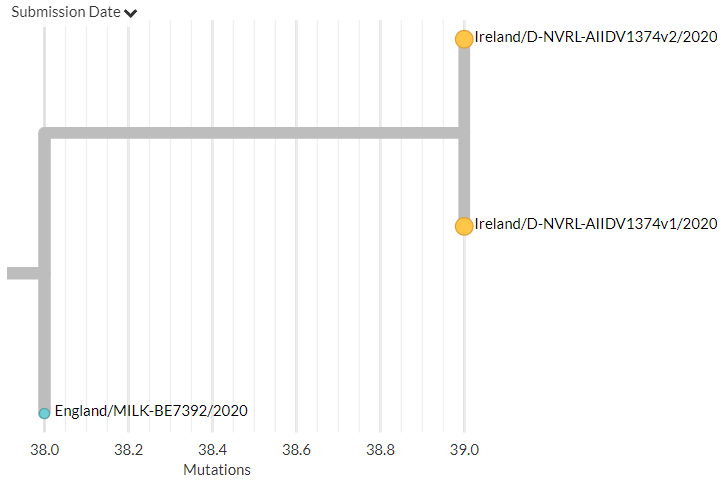

The Netherlands has 10 new seqs (orange). Many sit apart on the tree, indicating additional introductions. 3 cluster together separated by a few mutations. 2 are identical to an older seq. 1 falls in a cluster of older seqs. Some of these could indicate local transmission.
4/12


4/12



Israel has 22 new sequences (orange). 1 links to an older sequence, but is separated by 3 mutations, so may be separate introductions. Another is identical to an older sequence. But most new sequences cluster together (blue), clearly indicating local transmission.
5/12


5/12



Norway has 3 new sequences (orange). 2 cluster together but differ by 1 mutation, making their relationship hard to confidently infer. The other sits separately and indicates an independent introduction.
6/12


6/12



Italy has 2 new sequences (orange). Zooming in (divergence view) we can see they are identical (yellow), so are likely a single introduction.
7/12

7/12


The USA has 2 new sequences, from Connecticut (orange). They sit separately from each other & other USA sequences on the three, indicating independent introductions.
8/12
8/12

Luxembourg has 2 new sequences (orange). They sit apart on the tree, indicating separate introductions.
Sweden has 1 new sequence (orange). It sits separately, indicating an additional introduction
9/12

Sweden has 1 new sequence (orange). It sits separately, indicating an additional introduction
9/12

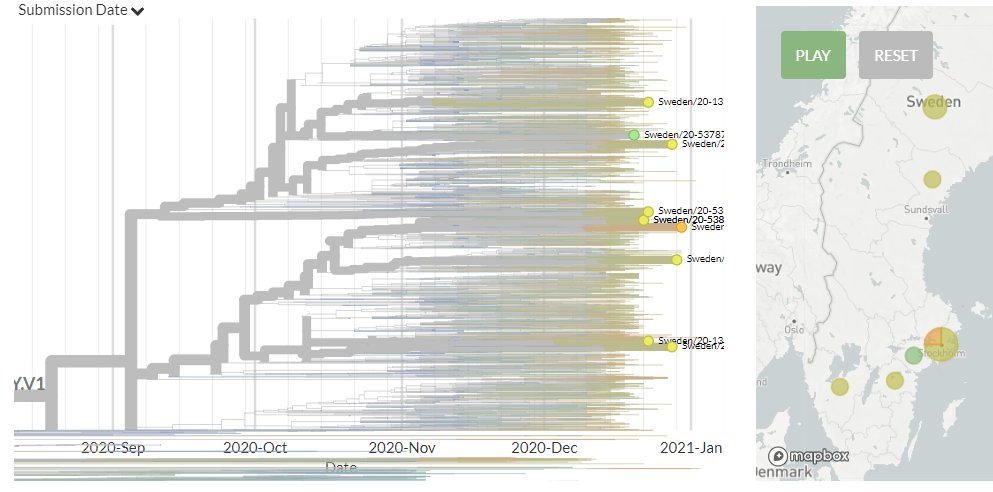
In 501Y.V2:
Australia has sequences that fall into 501Y.V2 for the first time. Zooming in (divergence), we can see they are identical, indicating one introduction.
10/12

Australia has sequences that fall into 501Y.V2 for the first time. Zooming in (divergence), we can see they are identical, indicating one introduction.
10/12
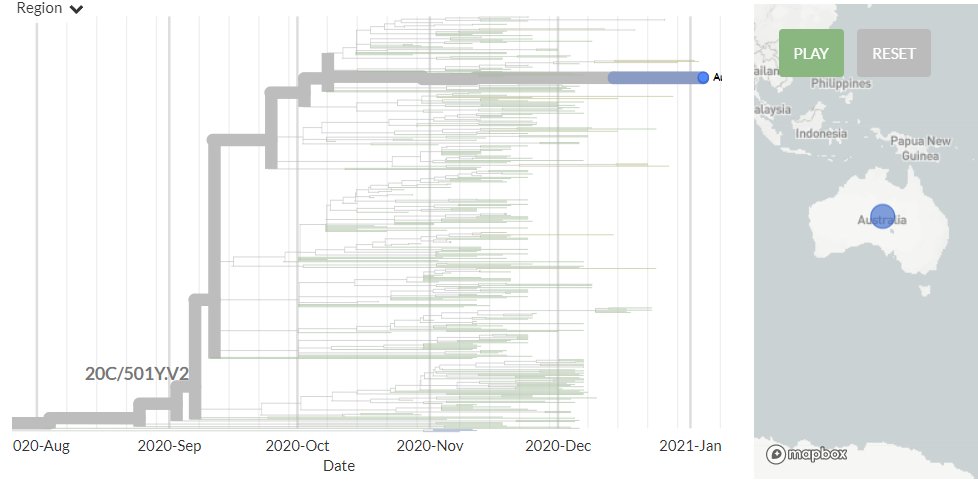

As always, the S:N501 "reduced UK" build is updated, & the country-graphs are also updated - remember: many places are preferentially sequencing S:N501 (hot pink), so the frequencies shown may not accurately reflect the true proportion of S:N501!
11/12
github.com/hodcroftlab/co…
11/12
github.com/hodcroftlab/co…

Finally, the main CoVariants SARS-CoV-2 Variant Tracking page is updated with new links & a new section for S:E484 - but as always, I welcome Pull Requests & Issues in the repository, with papers or online resources I've missed!
12/12
github.com/hodcroftlab/co…
12/12
github.com/hodcroftlab/co…
• • •
Missing some Tweet in this thread? You can try to
force a refresh




